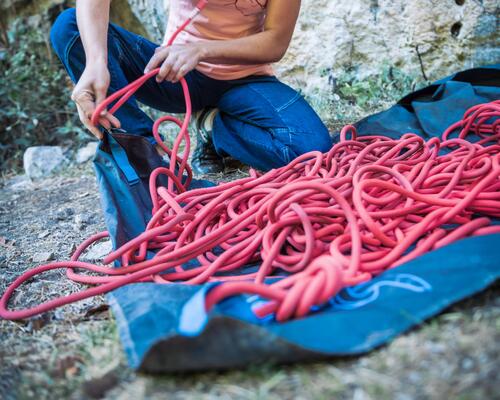Climb local!
Studies conducted in collaboration with climbing gyms have revealed that travelling to the gym or the crag has a greater impact than producing the equipment that is necessary go climbing!
So, the best thing you can do to reduce our environmental impact is to TRY YOUR BEST TO USE PUBLIC TRANSPORT AND "LOCAL SPOTS".
Applications and sites like Decathlon Outdoor, Climbing Away, Camp to camp, etc., can help you to find new climbing spots before buying the guide to the site.
As an experienced climber, you already know all the local routes "like the back of your hand". If that is the case, why not visit some spots that can be reached by train, bus or bike (a great way to warm up!), or try out car-sharing? It's more fun, cheaper and a good way to get to know new fellow climbers.
But what if you have more exotic aspirations? While we admit that it is hardly ideal, you can always try to offset your carbon footprint. Numerous sites already exist for this purpose.







